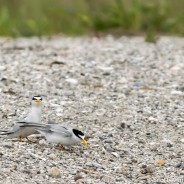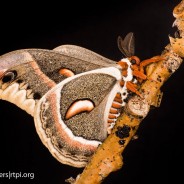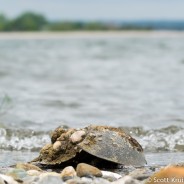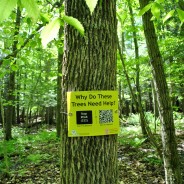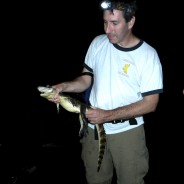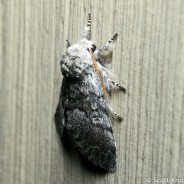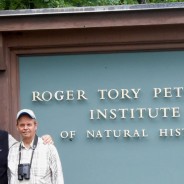I love this time of year. After the exuberance of summer and the vibrant colors of fall, I’m thankful for the days growing shorter. The nights longer. Temperatures falling. Silhouettes of bare branches against a leaden sky promising snow. All of nature winding down. Encouraging quiet. Reflection. Introspection. [more]
Least Terns
Here is one of those birds that would have been extirpated if not for the Migratory Bird Treaty Act – the Least Tern (Sternula antillarum). One of the focal species of the Audubon Alliance for Coastal Waterbirds, Least Terns were a target of the millinery (hat-making) trade and market hunting nearly wiped them out. Besides such a direct threat these birds must also be legally protected from harm via unaware beachgoers and unfortunately the select few who still wish to ignorantly hurt them in some way if we want them to make it through...
read moreMigratory Bird Treaty Act Under Fire
Please take a minute to fill out this petition through the American Bird Conservancy to uphold the Migratory Bird Treaty Act. If it was not for the MBTA we would not be able to enjoy many of the birds that we see around us every day. For example, the Audubon Alliance for Coastal Waterbirds may have been moot as likely all long-legged waders, terns and other shorebirds would have been extirpated. How can it be that we are trying to unravel some of the 20th century’s greatest conservation achievements, pushed forward by many people like...
read moreGiant Silk Moths
I know I’m easily distracted, and I know I should have been preparing for an RTPI Foundation Board meeting, but I could not pass up the opportunity to get a closer look at the beautiful creatures hanging out on the light post in front of RTPI this morning. I should have known that I would not be able to sneak out of the building carrying a butterfly net and a step ladder without anyone noticing… Two giant silk moths on the same light post! A Cecropia Moth (Hyalophora cecropia) and a Luna Moth (Actias luna) were enjoying a little...
read moreHorseshoe Crabs
If you are on the Atlantic Coast during the late spring you may be fortunate enough to find Horseshoe Crabs during the breeding season. Early June, especially around a new or full moon, is a very busy time for these marine arthropods that are considering living fossils, having existed nearly unchanged for approximately 450 million years. These photos were taken at Stratford Point in Stratford, Connecticut, an important mating site at the mouth of the Housatonic River. The females will lay eggs on beaches like this one, some subsequently being...
read moreSummer Forest Pests
While many are on summer vacation or are making their summertime plans, forest pests are making their plans too. Hemlock Woolly Adelgid and Emerald Ash Borer, both invasive species that are now present in Chautauqua County and beyond, are setting their sites on some summertime love and beautiful landscapes to destroy. As you may recall, this past winter we joined forces with Cornell Cooperative Extension of Chautauqua County (CCE) to establish an educational outreach project using bright yellow signs with information about these forest pests....
read moreThe Migratory Connection
Join us at RTPI on Thursday, June 11 at 7:00PM for a free public event – The Migratory Connection: RTPI’s Tropical Conservation and Education Programs by RTPI President Twan Leenders. Find out where your favorite warblers and hummingbirds hang out when they are not in your backyard and be amazed by the other tropical birds they share their wintering grounds with. Meet some of the rarest frogs on our planet and see what RTPI is doing to help save them from extinction. Explore the exotic wildlife that calls the jungles of Costa Rica and...
read moreSuccessful WAVE Training
We couldn’t have asked for a more gorgeous day to get out into a local stream and evaluate its water quality! Here are some photos from last week’s WAVE (Water Assessments by Volunteer Evaluators) training led by NYS DEC. Using the knowledge and hands-on experiences that was gained through our training, each of us will be able to go out and assess nearby streams to determine if they are impacted by pollutants, sedimentation and so on based on the little critters (macro-invertebrates) we find living beneath the rocks and logs...
read moreClose-banded Yellowhorn
Here we have what looks to be a Close-banded Yellowhorn (Colocasia propinquilinea) moth, one of a few dozen species that I enjoyed seeing while mothing this weekend. I will be sharing moths all spring, summer, and fall, in part to honor one of young Roger Tory Peterson’s hobbies, and something that helped foster his passion for the natural world in our Wild America. This pastime is as easy as turning on an outside light at night and seeing what shows up. The very difficult part comes in identifying these (mostly) nocturnal creatures! I...
read moreNoble Wins Roger Tory Peterson Award
The 2013 Roger Tory Peterson Institute of Natural History Bird Festival was made quite a bit more festive by the announcement that Noble Proctor was receiving the American Birding Association’s highest award: the Roger Tory Peterson Award promoting the Cause of Birding. This ‘lifetime achievement’ award has only been awarded a handful of times but few are more worthy of receiving this honor as Noble Proctor. ABA president Jeff Gordon detoured from his trip to Brazil to stop at RTPI and personally hand Noble this award during...
read moreNoble S. Proctor
This moving tribute to Noble Proctor and the accompanying terrific photo are by Patrick Lynch. Noble S. Proctor, May 28, 2015. I started at Southern as an art major, and after an unhappy semester and a half I decided to switch to biology. For guidance in the new major I was assigned to a young faculty member, a “Doctor Proctor.” We met, and Dr. Proctor turned out to be a very helpful and patient guide to starting over as a biology major, and after a pleasant half hour or so I went on my way. About six months later I was walking between...
read more



